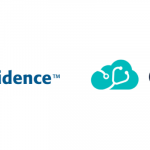More Hospital Infection Means More Health Care Navigation Is Necessary
There are over 40 hospitals in Toronto. As of the weekend, six of them have had COVID-19 outbreaks, including St. Mike’s where it’s reached five staff (but no patients yet) in their Emergency Department.
With Canada and Ontario recording record highs for new daily infections last week, the prospect of wards and even entire hospitals having to shut their doors to new patients is both clear and present.
This is all the more frightening if the response of officials resembles how they handled sending our kids back to school. Two months into that chaotic process, we can now look back to a series of stops and starts, unintended though predictable consequences, and millions of parents, frustrated and bewildered that they still don’t know the answer to this urgent question: “How will you educate my child?”
But unwell patients have different needs from pent-up kids. Since the early days of the pandemic when elective surgeries were postponed, the provinces have worked furiously to reduce the backlog of all elective procedures. And it’s important to note the context here that Canada already had one of the longest wait-times for surgeries in the industrialized world. This was pre-COVID.
During COVID and starting from an already unacceptable high bar of wait-times, hospital operating rooms have been running at maximum capacity in order to put a dent into that backlog.
But if hospital wards or hospitals themselves have to close their doors to elective procedures, many more Canadians will sicken and die, not from COVID, but from COVID making it impossible for hospitals to perform an ablation or remove a cancerous tumor.
If ERs have to close, the potential tragedy is of a different order entirely. What was almost unthinkable during the summer must now be contemplated as a distant possibility.
These groaning strains on the health care system make the argument for health care navigation even more urgent. When the system was well but the patient was sick, that patient needed someone to help navigate them through the system. Someone who could cut the wait time, not just for surgery, but for the time from visiting their family doctor to seeing a specialist, from seeing that specialist to booking the surgery, and from recovering from surgery to getting back to work.
Now that the system itself is growing frailer, the argument for health care navigation grows stronger and louder. Today, this proven patient management technique is limited to cancer patients. At least in Canada. In the US, where it first began, health care navigation is available for patients with virtually any condition requiring hospitalization.
Patient’s physicians were barely able to handle this before the pandemic struck. Now, their time and talents are urgently needed elsewhere.
COVID-19 and its devastating effects make the need for health care navigation throughout our entire system a necessary and long-overdue reform.






